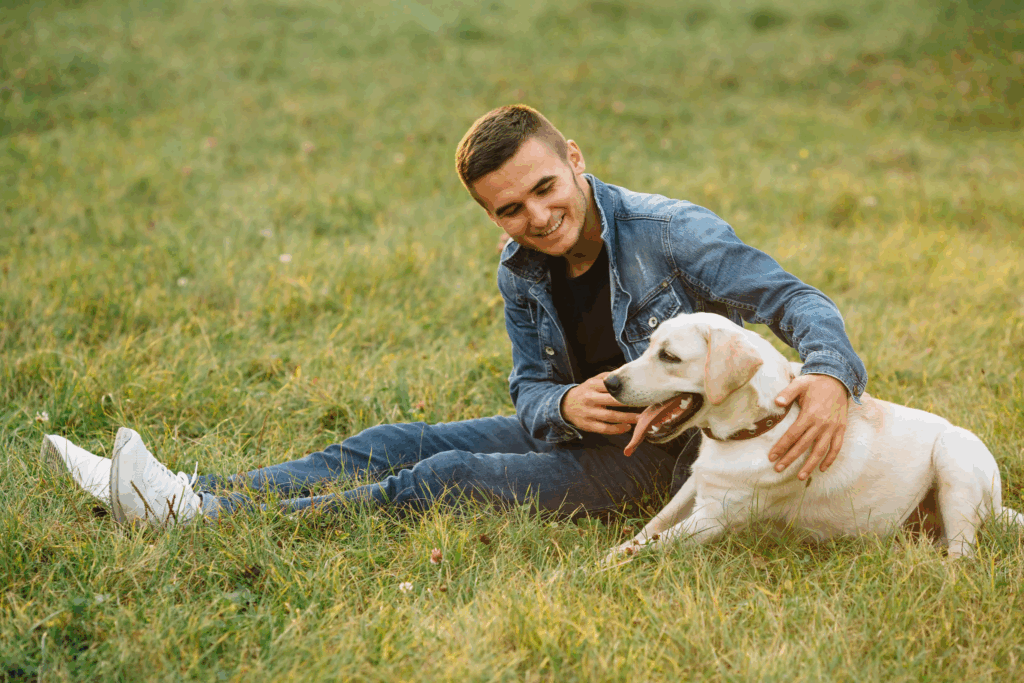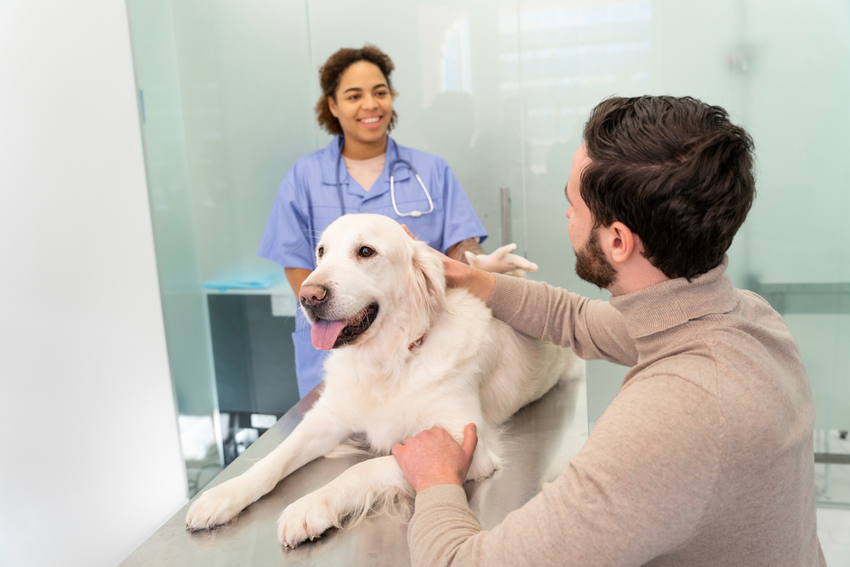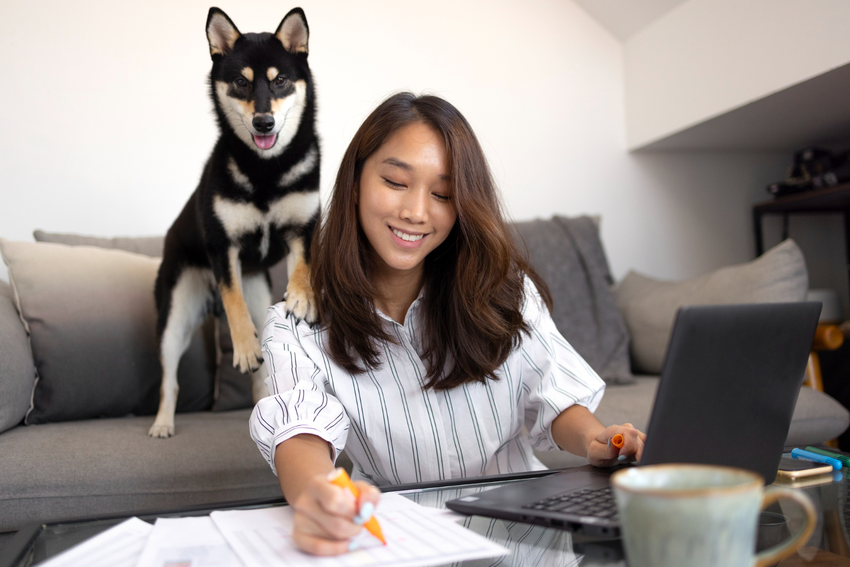Leaving your beloved canine companion in someone else’s care can feel like entrusting a family member to a stranger. Whether you’re planning a vacation, business trip, or simply need regular pet care during your work hours, finding the right in-home dog sitter is crucial for both your peace of mind and your dog’s wellbeing. Unlike traditional kennels where your pet may be one of many, in-home pet sitting provides personalized attention in a comfortable environment – either your home or the sitter’s.
But how do you know if you’ve found the perfect match? The meet-and-greet interview is your opportunity to assess whether a potential sitter has the experience, understanding, and genuine love for animals that your furry friend deserves. This crucial step shouldn’t be rushed or overlooked, as it sets the foundation for a trusting relationship between you, your dog, and their temporary caretaker.
In this comprehensive guide, we’ll walk through the essential questions to ask during your interview with potential at-home pet sitters. From basic qualifications and emergency preparedness to daily routines and communication expectations, we’ll cover everything you need to ensure your dog receives exceptional care. Whether you’re looking for dog sitters at their home or someone to stay at yours, these questions will help you make an informed decision that benefits everyone involved – especially your four-legged family member.
Ready to find the perfect match for your canine companion? Let’s dive into the most important questions that will help you select a trustworthy, skilled, and loving caregiver for your dog.
Want peace of mind on your next trip? Our professional in-home pet sitters are standing by to provide loving care for your furry family member! |
Understanding Their Experience and Qualifications
When trusting someone with your beloved pet’s care, their background and expertise matter significantly. The first portion of your interview should focus on understanding the potential sitter’s history with animals and any relevant credentials they might hold.
Professional Background and Training
Begin by asking about their professional journey with animals. How long have they been providing in-home dog sitting services? Did they work with animals in other capacities before becoming a pet sitter? Professional experience in veterinary offices, animal shelters, or dog training facilities can indicate a deeper understanding of canine behavior and health.
Equally important are any certifications or specialized training they’ve completed. While not all excellent pet sitters have formal certifications, credentials like Pet First Aid certification, professional membership in organizations like Pet Sitters International, or training in canine behavior show a commitment to professional development and safety standards.
“I’ve been working with animals professionally for over eight years, starting at a local shelter before transitioning to in-home pet boarding three years ago. I’m certified in Pet First Aid and CPR, and I regularly attend workshops on canine behavior.”
This type of response indicates someone who takes their role seriously and invests in their professional growth. Don’t hesitate to ask for references from other clients who have used their in-home dog boarding services. Speaking with past clients provides valuable insights into their reliability, communication style, and how they handle various situations with different dogs.
Species-Specific Experience
While general animal experience is valuable, specific experience with dogs—particularly breeds similar to yours—matters tremendously. Different breeds have varying energy levels, health concerns, and behavioral tendencies.
Ask detailed questions about their experience with dogs like yours:
- “Have you cared for [your dog’s breed] before?”
- “What do you know about this breed’s specific needs or challenges?”
- “How comfortable are you with a dog of my pet’s size/age/energy level?”
For example, a sitter experienced primarily with calm senior dogs might be overwhelmed by an energetic young Labrador. Similarly, someone used to small breeds might not be prepared for the physical demands of walking larger dogs.
If your dog has specific behavioral challenges, medical needs, or training protocols, discuss these openly to gauge the sitter’s comfort level and expertise. The right at-home dog sitter won’t claim to be an expert in everything but will honestly communicate their strengths and limitations regarding your specific pet’s needs.
Remember, experience doesn’t always mean years in business—quality matters more than quantity. A sitter who has thoughtfully cared for a smaller number of dogs over time may provide better service than someone who has briefly interacted with many.
Read More About Household Items to Keep Away from Dogs While At Home Dog Sitting
Daily Care Routine and Accommodations
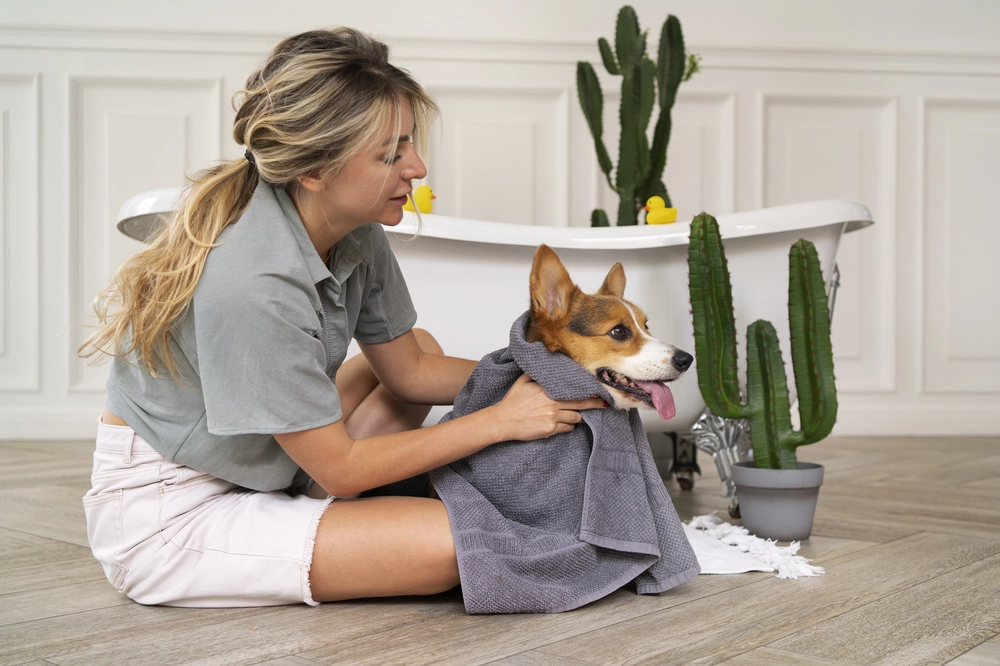
Understanding how your dog will spend their days under the sitter’s care is crucial for determining compatibility. This section of questions helps establish expectations about daily routines, activity levels, and living arrangements—especially important when considering dog sitters at their home.
Schedule and Activity Planning
Start by asking about a typical day in their care. How structured is their schedule? What kinds of activities do they typically include? The best in-home pet sitters will have a general routine but also show flexibility to accommodate your dog’s specific habits and preferences.
Inquire about:
- Walking schedules (frequency, duration, and typical routes)
- Playtime activities and mental stimulation offerings
- Rest periods and quiet time
- Feeding times and procedures
- Potty break frequency
For high-energy dogs, ask how they ensure sufficient exercise. For older or less active dogs, check how they balance minimal activity with necessary movement. A thoughtful sitter will ask about your dog’s current routine and work to maintain consistency rather than forcing your pet to adapt entirely to their schedule.
“I typically take morning walks around 7 AM, followed by breakfast. Midday includes another potty break and some playtime. Evenings include a longer walk and dinner. However, I’m happy to adjust to match your dog’s current schedule as closely as possible.”
Living Environment Details
If you’re considering dog sitters at their home near me, understanding their living environment becomes especially important. Ask about:
- The physical space (apartment, house with yard, etc.)
- Whether other animals will be present (and if so, how many)
- Their policies on furniture access, sleeping arrangements, and restricted areas
- Safety measures like secure fencing, removal of hazards, and pet-proofing
For in-home dog boarding at the sitter’s residence, it’s reasonable to request photos of the space or, ideally, visit in person before making a decision. This allows you to evaluate whether the environment meets your standards and suits your dog’s needs.
If the sitter will be staying in your home instead, discuss house rules and how they’ll maintain your home. Will they bring any supplies or equipment? How much time will they spend at your house versus being away? For longer trips, will they stay overnight or just visit multiple times per day?
The right arrangement depends entirely on your dog’s needs. Some pets do best staying in their familiar environment with a visiting sitter, while others may enjoy the stimulation of staying in someone else’s home with proper supervision. Discussing these details thoroughly helps ensure the setup will work for everyone involved.
Read More About Top 14 Qualities That Define the Best Pet Sitters
Health and Safety Protocols
When it comes to entrusting your dog to at-home pet sitters, nothing is more important than knowing they’ll be safe and that any health concerns will be properly addressed. This section of your interview should focus on emergency preparedness and medical knowledge.
Emergency Preparedness
Start by asking direct questions about how they handle emergencies:
- “What would you do if my dog had a medical emergency?”
- “Do you have a transportation plan to get to a vet quickly if needed?”
- “Are you familiar with the closest 24-hour emergency veterinary facility?”
A well-prepared in-home dog sitter should have clear protocols for various emergency scenarios. They should ask for your vet’s contact information, your pet insurance details (if applicable), and your preferences regarding treatment decisions and spending authorizations in your absence.
“I keep a detailed file for each pet in my care with emergency contacts, veterinary information, and the owner’s preferences. I always confirm the nearest emergency vet before starting care, and I have a relationship with my own veterinarian who can provide advice in uncertain situations.”
Don’t hesitate to role-play scenarios: “What would you do if my dog stopped eating?” or “How would you respond if you found my dog had ingested something potentially toxic?” Their answers reveal both their knowledge and decision-making process under pressure.
Medication Administration and Health Monitoring
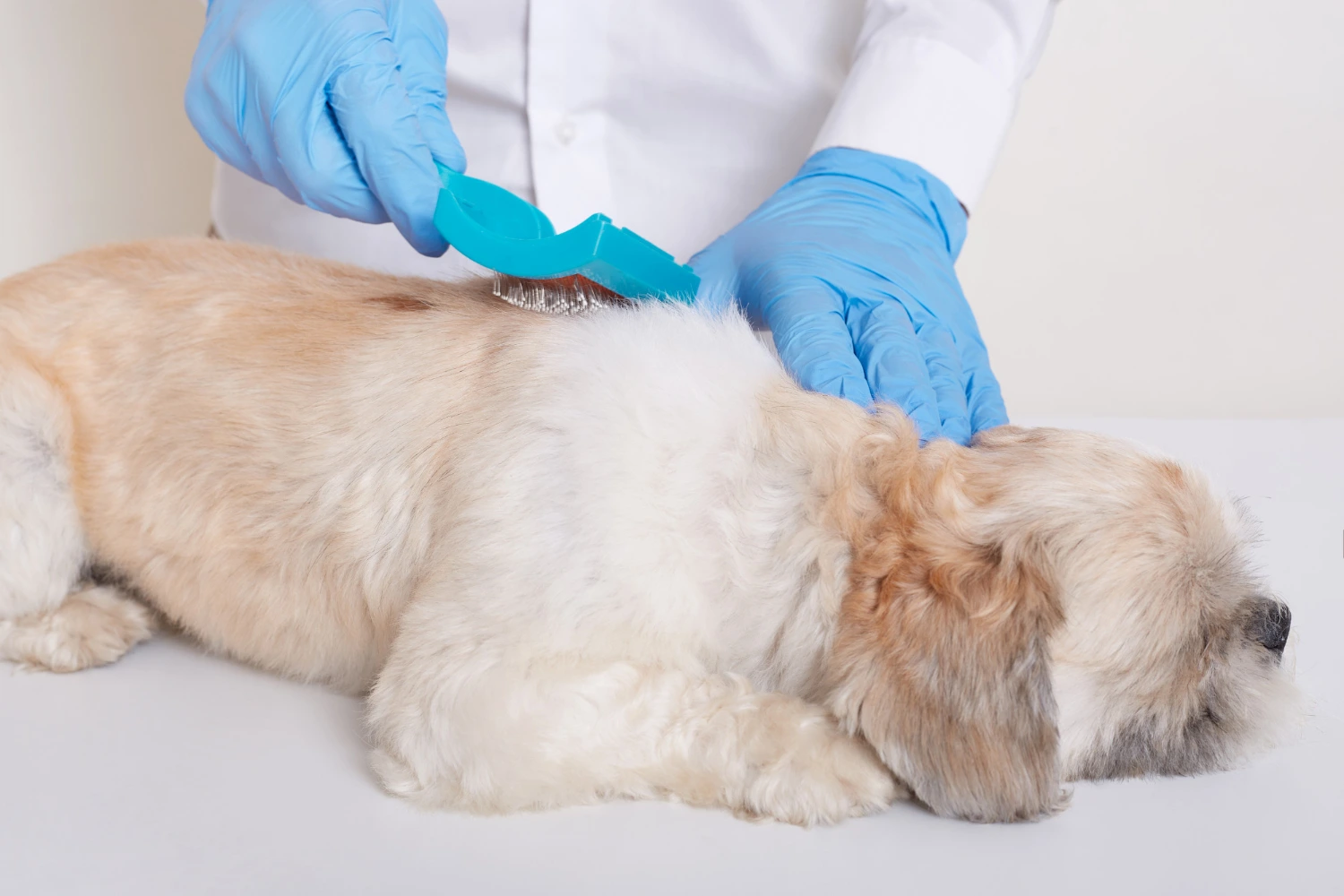
If your dog requires any medications or has health conditions requiring monitoring, this becomes an even more critical area of questioning. Ask about:
- Their experience administering various types of medications (pills, liquids, injections, etc.)
- How they track medication schedules to ensure doses aren’t missed
- Their comfort level with your pet’s specific medical needs
- How they monitor and document health observations
Even if your dog is currently healthy, understanding their capability to handle potential medical needs provides valuable peace of mind. A dedicated professional offering in-home dog boarding services should be willing to learn your pet’s specific medical requirements and follow your veterinarian’s instructions precisely.
For older dogs or those with chronic conditions, ask how they monitor subtle changes in behavior, appetite, or mobility that might indicate a developing problem. The best sitters notice small changes and communicate them promptly rather than waiting until issues become serious.
Additionally, inquire about their sanitation practices—how they maintain cleanliness to prevent illness, especially if they care for multiple animals. For dog sitters at their home, this becomes particularly important as your pet will be in an environment with potential exposure to other animals.
Your furry family member deserves personalized care! Book a meet-and-greet with our experienced dog sitters today. |
Communication Expectations
Clear, consistent communication between you and your in-home pet sitter forms the foundation of a successful relationship. During your meet-and-greet, establishing expectations about updates, accessibility, and communication style will prevent misunderstandings and provide peace of mind while you’re away.
Update Frequency and Format
Different pet owners have varying preferences regarding updates about their furry friends. Some want daily detailed reports with photos, while others prefer brief check-ins or updates only when something notable occurs. Discuss your preferences honestly:
- How often would you like updates about your dog?
- What format do you prefer for regular communications? (Text, email, phone calls, specialized pet-sitting apps)
- What specific information matters most to you in these updates?
- Would you like photos or videos of your dog during their stay?
A professional providing in-home dog boarding services should be able to accommodate reasonable communication requests and should have established systems for keeping clients informed. Listen for how they typically handle client communications and whether they seem organized in their approach.
“I typically send a morning text with a quick update and photo, then a more detailed evening report including information about meals, activities, bathroom habits, and overall mood. For longer stays, I’m happy to schedule brief video calls so you can see your pet if that would provide reassurance.”
Accessibility and Response Time
Understanding when and how quickly your sitter will respond to messages is equally important. Ask about:
- Their typical response time to messages
- Any scheduled periods when they’ll be unavailable
- Backup communication methods if primary channels fail
- Whether they’re comfortable with video calls if needed
If you’re someone who needs immediate responses to feel secure, make this clear during the interview. Similarly, if you’ll be traveling somewhere with limited connectivity, inform the sitter so they won’t worry if you don’t respond promptly to their updates.
For emergency situations, establish a clear protocol. Who should they contact if they can’t reach you? Is there a backup decision-maker authorized to make veterinary care decisions? Having these contingencies established before booking in-home pet sitting services prevents confusion during high-stress situations.
Remember that while constant availability might seem ideal, your sitter also needs focused time to properly care for your pet. A sitter who is constantly checking their phone may not be giving your dog their full attention during care time. The goal is finding a balanced communication approach that provides reassurance without interfering with quality care.
Read More About Why Pet Sitting Services Are Essential for Your Furry Friends
Handling Behavioral Challenges
Every dog has unique personality traits and potential behavioral quirks that require understanding and appropriate management. This section of your interview should focus on how the at-home dog sitter approaches common behavioral challenges and adapts to your dog’s specific needs.
Training Methods and Philosophy
Understanding a potential sitter’s training philosophy is crucial for maintaining consistency in your dog’s behavior. Ask about:
- Their general approach to dog training and behavior management
- How they handle common issues like pulling on leash, jumping, or barking
- Their methods for reinforcing good behavior
- Their response to unwanted behaviors
Look for answers that align with positive reinforcement techniques rather than punishment-based approaches. A quality in-home dog sitter should emphasize reward-based methods and understand the importance of consistency with your existing training protocols.
“I primarily use positive reinforcement—rewarding good behavior with treats, praise, or play rather than punishing unwanted behaviors. I find this builds trust and cooperation. I’d want to understand what commands and techniques you use at home so I can maintain consistency.”
This type of response indicates a modern, humane approach to dog behavior management. Be wary of those who emphasize dominance theory or physical corrections, as these approaches can damage your dog’s trust and potentially exacerbate behavioral issues.
Specific Scenario Handling
Present specific scenarios relevant to your dog’s behavior patterns and ask how they would handle them. For example:
- “My dog gets anxious during thunderstorms. How would you manage this?”
- “What would you do if my dog refused to eat while I was away?”
- “How would you handle it if my dog became protective of toys or food?”
Their responses should demonstrate both knowledge of dog behavior and flexibility in approaching individual dogs’ needs. The best in-home pet boarding providers recognize that strategies effective for one dog may not work for another.
For dogs with serious behavioral challenges like separation anxiety, aggression, or extreme fearfulness, ask about any specialized experience they have with these issues. Not every sitter has the skills to manage all behavioral challenges, and an honest admission of limitations is preferable to overconfidence.
If your dog has specific triggers or fears, discuss these openly and gauge the sitter’s comfort level and proposed management strategies. For example, if your dog is reactive to other dogs on leash, how would they handle walks to minimize stress? If your dog is fearful of men or children, how would they navigate potentially triggering situations?
A thoughtful discussion about behavioral management demonstrates the sitter’s experience level and helps determine if they’re equipped to meet your particular dog’s needs while maintaining the training progress you’ve achieved.
Policies and Business Practices
Professional at-home pet sitters should have well-established business policies that protect both parties and ensure clarity regarding expectations, payment, and handling of various situations. This section of questions helps you understand the business side of your arrangement.
Booking and Cancellation Policies
Start by understanding their booking process:
- How far in advance do they typically require reservations?
- What information do they need before confirming a booking?
- Do they require a deposit or contract?
- What are their cancellation policies and associated fees?
Professional dog sitters at their home typically have structured policies that balance their need for scheduling security with reasonable flexibility for clients. Red flags include extremely rigid cancellation policies with high fees or, conversely, completely informal arrangements with no clear expectations.
“I require bookings at least a week in advance for new clients, though I can sometimes accommodate existing clients on shorter notice. I use a service agreement that outlines care details and policies, and I require a 25% deposit to secure the booking. Cancellations with more than 72 hours’ notice receive a full deposit refund; later cancellations forfeit the deposit unless it’s due to a verifiable emergency.”
This type of structured approach indicates professionalism and clear boundaries. Additionally, inquire about their policy for last-minute schedule changes on your part or theirs. What happens if you need to extend your trip or return early? How do they handle situations where they become ill or have an emergency?
Your dog deserves the very best care when you can’t be there. Our experienced team specializes in personalized in-home dog sitting services tailored to your pet’s needs. |
Insurance and Business Credentials
Professional in-home dog sitting providers should carry appropriate insurance and, depending on your location, may need specific licenses or permits. Ask about:
- Whether they carry professional liability insurance for pet sitting
- If they’re bonded (providing financial protection against theft or damage)
- Any required local business licenses or permits
- Professional memberships or affiliations
Insurance is particularly important as it protects both you and the sitter in case of accidents, property damage, or other unexpected situations. If a sitter doesn’t have insurance, this may indicate they’re not fully committed to their business or haven’t considered the potential risks involved in pet care.
For dog sitters at their home near me, also ask about their homeowner’s or renter’s insurance and whether it explicitly covers their pet sitting activities. Some policies exclude business activities or have restrictions regarding animal care, so confirmation that their coverage extends to their pet sitting work is important.
Legitimate business credentials don’t guarantee quality care, but they do suggest a professional approach and commitment to operating ethically and legally. Combined with positive references and your personal impression during the meet-and-greet, these credentials help build confidence in your choice of caregiver.
The In-Person Meet and Greet

While the questions covered so far help evaluate a sitter’s qualifications and policies, nothing replaces observing their interaction with your dog firsthand. The in-person meet-and-greet is your opportunity to assess chemistry, handling skills, and your dog’s comfort level with this potential caregiver.
Observing Dog-Sitter Interactions
When arranging the meet-and-greet for in-home dog boarding or in-home pet sitting services, plan for enough time (at least 30-60 minutes) to observe meaningful interactions. Pay attention to:
- How the sitter approaches your dog initially (Do they allow your dog to make the first move or do they rush the introduction?)
- Their body language around your dog (Are they relaxed, confident but not intimidating?)
- How they speak to and touch your dog (Is their tone gentle but assured?)
- Whether they ask permission before offering treats or engaging in certain activities
A skilled at-home dog sitter will let your dog set the pace for the introduction, especially if your pet is shy or cautious with strangers. They should demonstrate respect for your dog’s boundaries while showing appropriate confidence and leadership.
“I always let dogs approach me first at their own pace. Some dogs warm up immediately, while others need time to become comfortable. I never force interaction, as that can create negative associations. Instead, I might sit quietly, avoid direct eye contact, and let curiosity bring them to me.”
Watch for signs that the sitter knows how to read canine body language. Do they notice when your dog is showing stress signals like lip licking, yawning, or whale eye? Do they adjust their approach accordingly? This awareness is crucial for building trust and preventing negative experiences.
Testing Scenarios
If appropriate, create mini-scenarios to test the sitter’s handling abilities:
- Ask them to put on your dog’s harness or leash
- Have them demonstrate how they would check your dog’s paws or ears
- If your dog knows commands, ask the sitter to try some basic cues
These exercises reveal their practical skills and comfort level handling routine care tasks. A skilled provider of dog sitters at their home services should show competence in these basics while maintaining a calm, positive demeanor.
For dogs with specific needs, test scenarios relevant to their care requirements. For example, if your dog needs medication, ask them to demonstrate their approach (using a placebo). If your dog has mobility issues, observe how they assist with movement or stairs.
Throughout this process, watch your dog carefully. Animals often sense things we miss, and your dog’s comfort level with a potential sitter provides valuable insight. While initial shyness isn’t necessarily disqualifying, signs of persistent fear or stress suggest this might not be the right match.
Remember that the meet-and-greet benefits everyone involved—it gives you peace of mind, allows your dog to become familiar with the sitter before an extended stay, and helps the sitter understand your dog’s personality and needs firsthand.
Read More About Benefits of Pet Sitting for Dogs with Special Needs
Making Your Final Decision
After conducting thorough interviews and meet-and-greets with potential in-home dog sitters, you’ll need to evaluate all the information to make your final decision. This process involves weighing various factors and trusting your instincts about what’s best for your beloved pet.
Comparing Options and Red Flags
Create a simple evaluation system that helps you objectively compare different at-home pet sitters you’ve interviewed. Consider rating each candidate on key factors like:
- Experience and qualifications
- Communication style and responsiveness
- Policies and professionalism
- Connection with your dog
- Alignment with your care philosophy
- Value (not necessarily the lowest price)
While comparing options, be mindful of potential red flags that might indicate problems:
- Reluctance to provide references
- Vague answers about experience or emergency protocols
- Dismissive attitude toward your specific instructions or concerns
- Poor communication during the interview process
- Uncomfortable reactions from your dog
- Extremely low prices (which may indicate cutting corners)
Trust your intuition. If something feels off despite good answers to your questions, it’s worth considering other options. The right in-home dog boarding provider should leave you feeling confident and reassured rather than anxious or uncertain.
Trial Runs Before Extended Stays
Before committing to a longer stay, consider booking a short trial session with your chosen sitter. This could be a single day visit or overnight stay depending on the services you’ll eventually need. A trial run provides valuable insights into how the arrangement works in practice rather than just in theory.
“I actually recommend a short trial booking before longer stays. It gives your dog a chance to get comfortable with me and my home environment, and it allows you to see how our communication works in practice. Think of it as a dress rehearsal that benefits everyone.”
After the trial, evaluate both tangible factors (did they follow instructions, provide updates as agreed, etc.) and intangible ones (does your dog seem happy and relaxed upon return?). This real-world test often confirms your choice or reveals issues that weren’t apparent during the interview.
Remember that finding the right dog sitters at their home near me may take time, and it’s worth investing this effort for your pet’s wellbeing. The perfect match provides not just basic care but genuine affection and understanding of your dog’s unique personality and needs.
Don’t wait until the last minute to arrange quality care for your dog. Our booking calendar fills quickly, especially during holiday seasons! |
Conclusion
Finding the perfect in-home dog sitter is a process that requires thoughtfulness, attention to detail, and trust in both your judgment and your dog’s reactions. By asking these comprehensive questions during your meet-and-greet interviews, you’ve taken an important step toward ensuring your beloved companion receives excellent care during your absence.
Remember that the ideal in-home pet sitting arrangement is one where everyone benefits: your dog receives loving, consistent care in a comfortable environment; you gain peace of mind knowing your pet is in capable hands; and the sitter has clear expectations and all the information needed to succeed. Taking the time to thoroughly vet potential caregivers demonstrates your commitment to your dog’s wellbeing and sets the foundation for a positive experience.
As you make your decision, weigh not just the practical qualifications and policies but also the intangible connection between your dog and their potential caregiver. The right at home dog sitter will demonstrate not only professional capability but genuine affection and understanding for your unique furry friend.
When you find that special person who meets all your criteria and makes your dog’s tail wag with excitement, you’ll know your search has been successful. And while no one can care for your dog exactly as you do, the right sitter will come close—providing love, attention, and security until you return home to your eagerly waiting companion.
Ready to provide your dog with exceptional care while you’re away?
Contact our team of professional pet sitters today to schedule your personalized meet-and-greet!
FAQs
Is in-home dog sitting more expensive than boarding kennels?
Yes, in-home dog sitting typically costs more than traditional boarding kennels. However, the personalized attention, reduced stress for your pet, and convenience of maintaining your dog’s routine often justify the additional expense for many pet owners.
How far in advance should I book an in-home dog sitter?
For regular weekday care, booking 1-2 weeks in advance is usually sufficient. For holiday periods, summer vacations, or other peak times, it’s advisable to book 4-8 weeks ahead, as experienced sitters often fill their schedules quickly during these periods.
What supplies should I leave for an in-home pet sitter?
Besides pet food, medications, and toys, prepare: extra cleaning supplies, towels for muddy paws, contact information for neighbors or nearby friends, detailed home instructions (trash day, mail collection, plant care), clear feeding guidelines with measurements, and appropriate seasonal gear (snow shovel, umbrella, etc.) if your dog needs outdoor time.
What happens if my return is delayed due to travel issues?
Discuss contingency plans during your initial meeting. Most professional sitters build some flexibility into their schedules for common travel delays. Some may charge additional daily rates for extended stays, while others have emergency extension fees. Establish communication protocols and payment expectations for this scenario.

